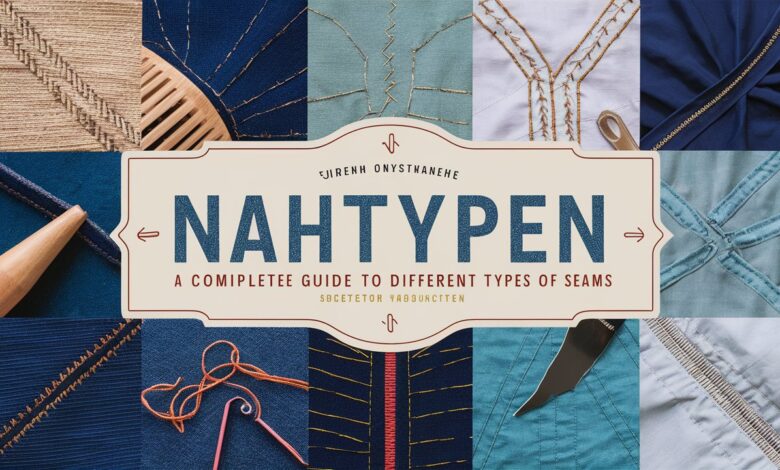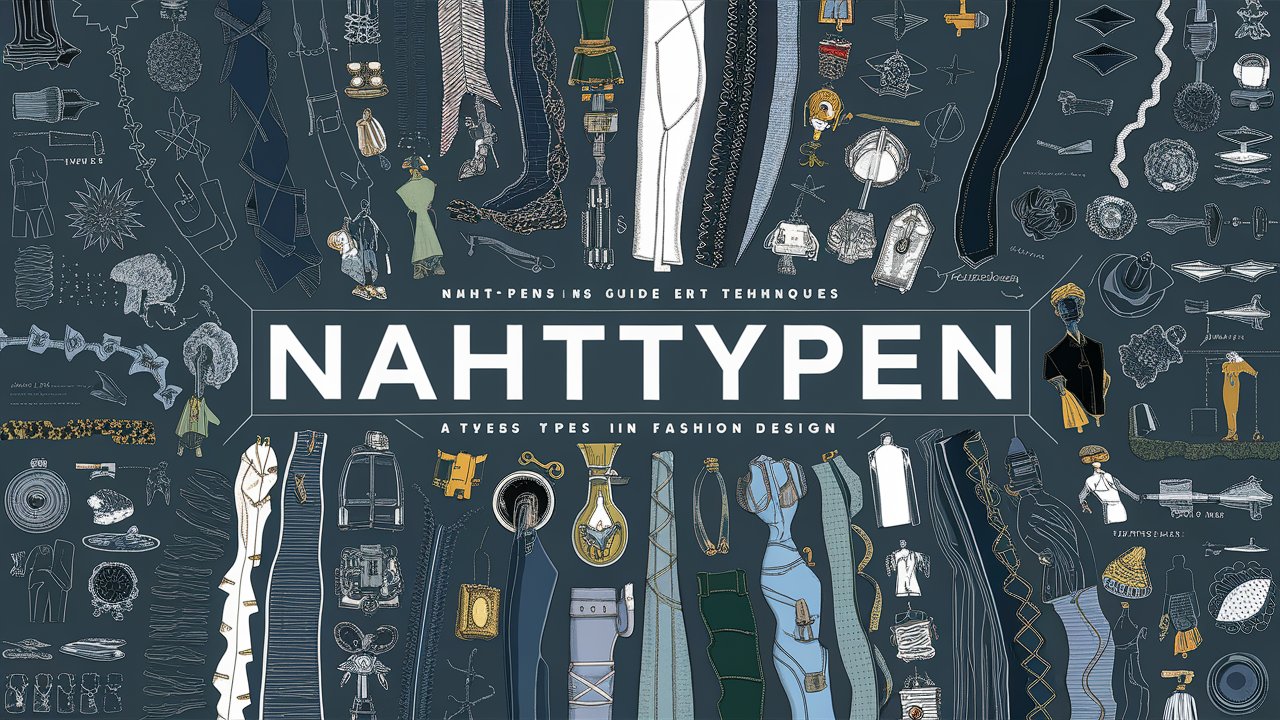Nahttypen – A Complete Guide to Different Types of Seams

When it comes to sewing, tailoring, and garment construction, one of the most essential elements that determine both the durability and the visual appeal of a piece is the type of seam, known in German as Nahttypen. Seams are not just functional—they are structural reinforcements, aesthetic details, and important techniques that define the craftsmanship of clothing, upholstery, or technical textiles. By understanding the various seam types, we can improve the quality, longevity, and professional finish of any textile product.
In this article, we will explore the different types of seams (Nahttypen), their unique features, applications, and why choosing the right seam is crucial for both beginners and professional tailors.
What Are Nahttypen (Seam Types)?
Nahttypen refers to the different methods of joining fabric pieces together. Depending on the textile, seam placement, and intended use, seams vary in structure, strength, and design. Some seams are made for durability and strength, while others are designed for aesthetic appearance or decorative effect. Seam types are categorized based on their construction technique, from simple straight stitches to more complex reinforced or enclosed seams.
Understanding seam types allows us to select the right method for specific garments—whether creating lightweight dresses, durable denim jeans, sportswear, or home décor textiles.
The Most Common Types of Seams (Nahttypen)
1. Plain Seam (Geradstichnaht)
The plain seam is the most basic and widely used seam type. It is formed by placing two fabric edges together and sewing them with a straight stitch. While simple, it is extremely versatile and used in almost every kind of garment. The seam allowances are typically pressed open, giving a flat finish.
-
Best used for: blouses, skirts, dresses, and garments where seams are not under high stress.
-
Advantages: simple, quick, and clean.
-
Disadvantages: limited durability if not reinforced.
2. French Seam (Französische Naht)
The French seam is a technique where the raw edges are completely enclosed within the seam. This gives a neat and polished finish, making it ideal for delicate fabrics.
-
Best used for: sheer fabrics like chiffon, silk, or organza.
-
Advantages: prevents fraying, looks professional inside and out.
-
Disadvantages: slightly more time-consuming, not suitable for thick fabrics.
3. Flat-Felled Seam (Kappnaht)
The flat-felled seam is known for its extra strength and durability. The raw edges are tucked inside and stitched down flat, leaving no exposed threads. This seam is commonly seen in denim jeans and workwear.
-
Best used for: denim, trousers, sportswear, and uniforms.
-
Advantages: very strong, resists wear and tear, clean finish.
-
Disadvantages: adds bulk, requires more precision.

4. Overlocked Seam (Overlocknaht)
An overlocked seam, often created with a serger machine, uses multiple threads to wrap around the raw fabric edges. It is excellent for stretch fabrics and garments that require flexibility.
-
Best used for: knitwear, T-shirts, leggings, sportswear.
-
Advantages: prevents fraying, stretches with fabric, fast sewing.
-
Disadvantages: requires a serger, less decorative than other seams.
5. Zigzag Seam (Zickzacknaht)
The zigzag seam is a versatile technique often used on raw fabric edges to prevent fraying when an overlock machine is not available. It can also be used decoratively.
-
Best used for: casual garments, repairs, lightweight fabrics.
-
Advantages: easy, prevents unraveling, flexible.
-
Disadvantages: less durable compared to flat-felled or overlocked seams.
6. Lapped Seam (Überlappte Naht)
A lapped seam is formed by overlapping fabric edges and stitching them together. It is common in outerwear, leather goods, and technical textiles.
-
Best used for: jackets, coats, leather products, upholstery.
-
Advantages: strong, resistant to fraying, visually appealing.
-
Disadvantages: requires precise alignment.
7. Bound Seam (Eingefasste Naht)
The bound seam uses a strip of fabric or bias tape to cover the raw edges. This seam type is decorative and often used in high-quality tailoring.
-
Best used for: luxury garments, couture, and unlined jackets.
-
Advantages: stylish, hides raw edges, professional finish.
-
Disadvantages: takes more time and fabric.
8. Double-Stitched Seam (Doppelnaht)
The double-stitched seam is a reinforcement method where two parallel stitches hold the fabric together. This increases durability and provides a bold look.
-
Best used for: jeans, trousers, work uniforms.
-
Advantages: very strong, decorative, prevents seam opening.
-
Disadvantages: less suitable for delicate fabrics.
9. Decorative Seam (Ziernaht)
A decorative seam combines strength with visual detail. Using special thread, contrasting colors, or embroidery stitches, it enhances the garment’s appearance.
-
Best used for: decorative stitching on jackets, dresses, and home décor.
-
Advantages: stylish, unique, versatile.
-
Disadvantages: requires precision and often more time.
Choosing the Right Nahttypen for Your Project
When deciding which seam type to use, we must consider fabric type, garment purpose, and desired finish. Lightweight fabrics demand neat finishes like French seams, while heavy-duty fabrics benefit from flat-felled or double-stitched seams. Stretch fabrics require flexible seams such as overlock or zigzag. Decorative projects, on the other hand, shine with bound or decorative seams.
By selecting the correct Nahttypen, we not only ensure the garment’s durability but also elevate its craftsmanship and overall appeal.
Tips for Professional Seam Finishing
-
Always press seams properly during construction for a polished look.
-
Use matching thread colors for invisible finishes and contrasting colors for decorative seams.
-
Invest in a serger machine if working frequently with stretch fabrics.
-
Reinforce seams in areas under stress, such as shoulders, armholes, and side seams.
Conclusion
Understanding the wide range of Nahttypen (seam types) is essential for anyone working with textiles. Each seam has its own strengths, weaknesses, and best applications, from the simplicity of the plain seam to the sophistication of the French seam and the durability of the flat-felled seam. By mastering different seam types, we can produce garments and textile products that are not only functional but also elegant, professional, and long-lasting.
Frequently Asked Questions (FAQ)
Q1: What is the strongest seam type?
The flat-felled seam (Kappnaht) is considered the strongest due to its double stitching and enclosed raw edges.
Q2: Which seam is best for delicate fabrics?
The French seam works best for sheer or delicate fabrics like silk and chiffon.
Q3: Can I sew without a serger?
Yes, a zigzag seam on a standard sewing machine can substitute for overlocking in many cases.
Q4: What seam is commonly used in jeans?
Flat-felled seams and double-stitched seams are standard in denim jeans for durability.
Q5: Which seam is the most decorative?
Decorative seams (Ziernähte) are specifically designed for visual enhancement and styling.



